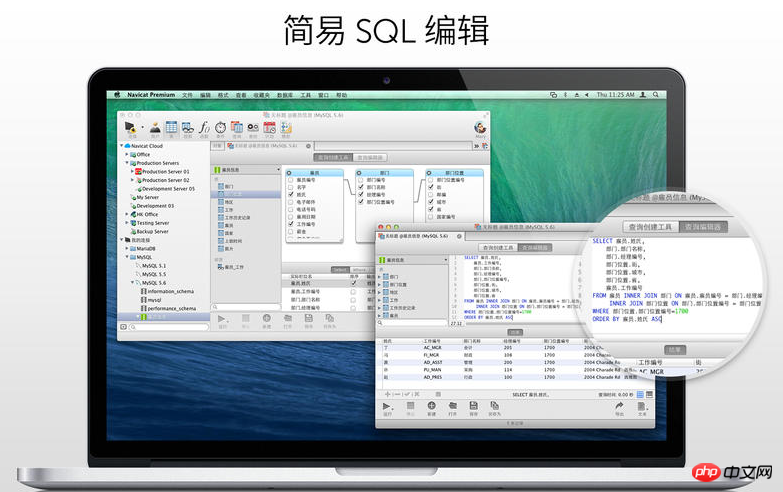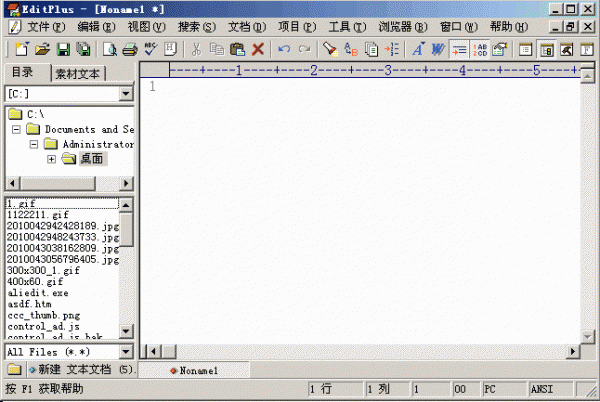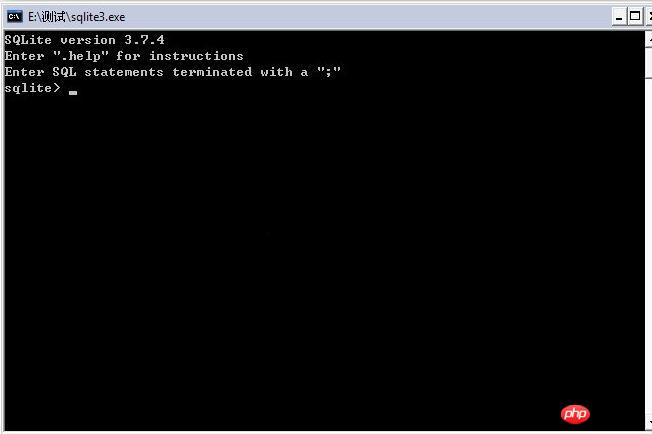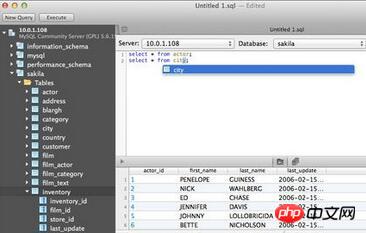How to open sql file
Opening method: 1. Open through navicat for mysql software, which is a database management software; 2. Open through Navicat Premium software, which is a database management tool; 3. Open through SQLite, which is a database management tool. A lightweight database management tool; 4. Open through SQLPro.
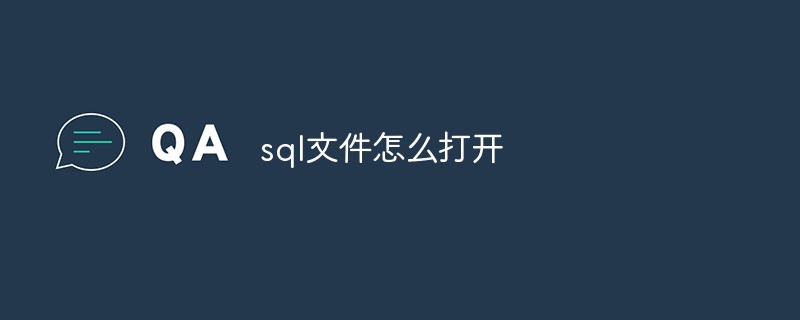
The operating environment of this article: Windows 7 system, Dell G3 computer, SQL Server 2016 version.
This article mainly introduces how to open SQL files.
First of all, everyone needs to briefly understandWhat is a SQL file?
SQLThe full name is Structured Query Language, which means Structured Query Language. It is a database query and programming language, mainly used to access data and Query, update and manage relational database systems, which means SQL is an important tool for connecting database servers and clients. And sql is also the extension of the database script file, such as xxx.sql This type of file is SQL file.
After briefly understanding the definition and use of SQL, how do you open a SQL file?
If you don’t need to edit the SQL file in depth, the easiest way to open it is to use local Notepad.
Of course, if you want to learn or use SQL files in depth, you can use professional SQL-related software.
(Recommended mysql video tutorials: "mysql tutorial")
Here are six SQL related software recommended for you, you can For everyone to open or edit SQL files:
1. navicat for mysql cracked version
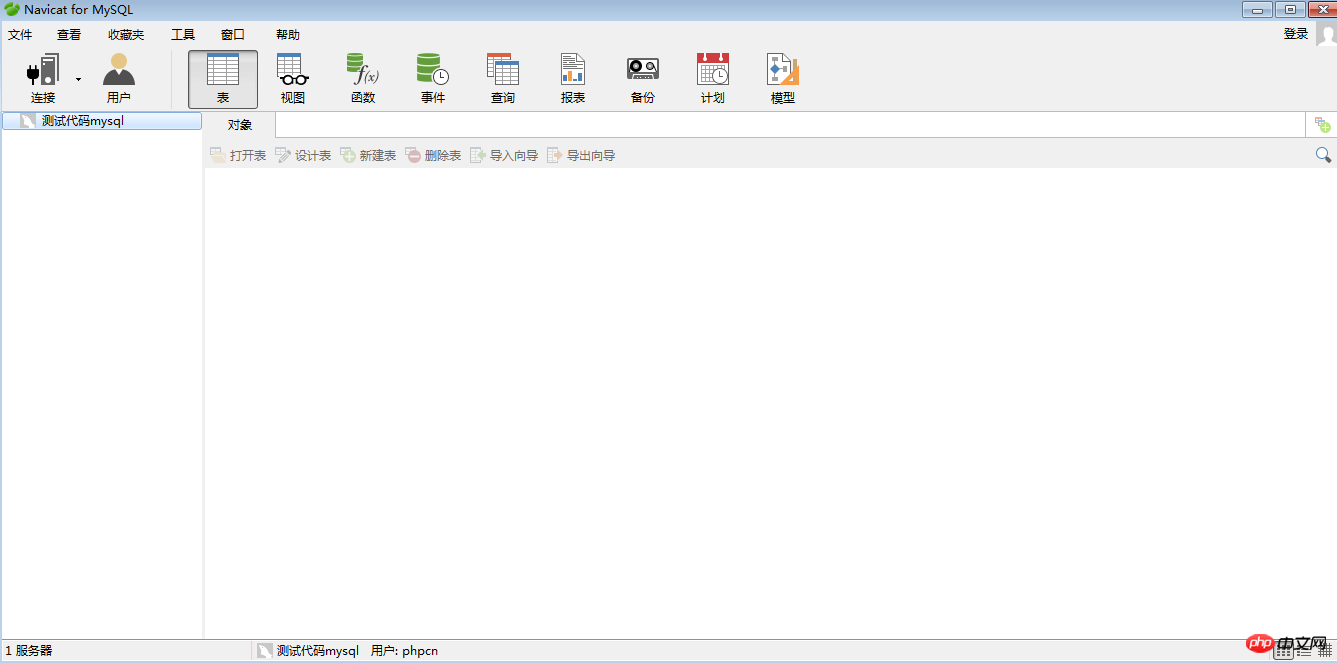 navicat for mysqlChinese cracked version, an excellent mysql database remote management tool, is a very easy-to-use mysql database management software for database connection, online backup, online download, and online management! It is also a specially integrated GUI tool (graphical user interface) that provides users with an easy way to perform database development and MySQL management. The software is compatible with all cloud databases and comes with an intuitive and powerful graphical interface for database management as well as development and maintenance.
navicat for mysqlChinese cracked version, an excellent mysql database remote management tool, is a very easy-to-use mysql database management software for database connection, online backup, online download, and online management! It is also a specially integrated GUI tool (graphical user interface) that provides users with an easy way to perform database development and MySQL management. The software is compatible with all cloud databases and comes with an intuitive and powerful graphical interface for database management as well as development and maintenance.
##NavicatPremium( mac cracked version) is the best database graphical management client, supporting databases such as MySQL, SQL Server, SQLite, Oracle and PostgreSQL, supporting database modeling, forward and reverse engineering, data synchronization and other functions, and the Premium version is The most powerful version that contains all the functions of Navicat, it is the preferred database client tool!
3. EditPlus Chinese cracked version
##EditPlus( Text editor)The Chinese version is a powerful text editor that can replace Notepad. It has unlimited undo and redo, English spell check, automatic line wrapping, column number marking, search and replace, and simultaneous editing. Multi-file, full-screen browsing capabilities. And it also has a useful function, that is, it has the function of monitoring the clipboard. Synchronized with the clipboard, it can automatically paste into the EditPlus window, eliminating the step of pasting.
4. is a lightweight database, its design target is embedded, and it has been used in many embedded products. It takes up very low resources. In embedded devices, it may only require a few hundred K of memory is enough. It can support mainstream operating systems such as Windows/Linux/Unix, and can be combined with many programming languages, such as Tcl, PHP, Java, etc., as well as ODBC interfaces. It is also compared to Mysql and PostgreSQL, two world-famous open source software. In terms of database management systems, its processing speed is faster than them all.5.
SQLPro for Mysql1.0.13
PHP Chinese provides you with the Mac version of SQLPro for MySQL 1.0.13 cracked version for free download. SQLPro for MySQL is an excellent MySQL client on Mac. Terminal, convenient and fast connection to MySQL database, graphical interface, supports multiple themes, code highlighting, statement query, etc.!
##Adminer is a super lightweight MySQL management tool, in addition to supporting MySQL, the full version supports almost all common databases. This article is a detailed introduction on how to open SQL files. You can choose to use appropriate SQL-related software according to your own needs.The above is the detailed content of How to open sql file. For more information, please follow other related articles on the PHP Chinese website!

Hot AI Tools

Undresser.AI Undress
AI-powered app for creating realistic nude photos

AI Clothes Remover
Online AI tool for removing clothes from photos.

Undress AI Tool
Undress images for free

Clothoff.io
AI clothes remover

Video Face Swap
Swap faces in any video effortlessly with our completely free AI face swap tool!

Hot Article

Hot Tools

Notepad++7.3.1
Easy-to-use and free code editor

SublimeText3 Chinese version
Chinese version, very easy to use

Zend Studio 13.0.1
Powerful PHP integrated development environment

Dreamweaver CS6
Visual web development tools

SublimeText3 Mac version
God-level code editing software (SublimeText3)

Hot Topics
 When might a full table scan be faster than using an index in MySQL?
Apr 09, 2025 am 12:05 AM
When might a full table scan be faster than using an index in MySQL?
Apr 09, 2025 am 12:05 AM
Full table scanning may be faster in MySQL than using indexes. Specific cases include: 1) the data volume is small; 2) when the query returns a large amount of data; 3) when the index column is not highly selective; 4) when the complex query. By analyzing query plans, optimizing indexes, avoiding over-index and regularly maintaining tables, you can make the best choices in practical applications.
 Can I install mysql on Windows 7
Apr 08, 2025 pm 03:21 PM
Can I install mysql on Windows 7
Apr 08, 2025 pm 03:21 PM
Yes, MySQL can be installed on Windows 7, and although Microsoft has stopped supporting Windows 7, MySQL is still compatible with it. However, the following points should be noted during the installation process: Download the MySQL installer for Windows. Select the appropriate version of MySQL (community or enterprise). Select the appropriate installation directory and character set during the installation process. Set the root user password and keep it properly. Connect to the database for testing. Note the compatibility and security issues on Windows 7, and it is recommended to upgrade to a supported operating system.
 Explain InnoDB Full-Text Search capabilities.
Apr 02, 2025 pm 06:09 PM
Explain InnoDB Full-Text Search capabilities.
Apr 02, 2025 pm 06:09 PM
InnoDB's full-text search capabilities are very powerful, which can significantly improve database query efficiency and ability to process large amounts of text data. 1) InnoDB implements full-text search through inverted indexing, supporting basic and advanced search queries. 2) Use MATCH and AGAINST keywords to search, support Boolean mode and phrase search. 3) Optimization methods include using word segmentation technology, periodic rebuilding of indexes and adjusting cache size to improve performance and accuracy.
 Difference between clustered index and non-clustered index (secondary index) in InnoDB.
Apr 02, 2025 pm 06:25 PM
Difference between clustered index and non-clustered index (secondary index) in InnoDB.
Apr 02, 2025 pm 06:25 PM
The difference between clustered index and non-clustered index is: 1. Clustered index stores data rows in the index structure, which is suitable for querying by primary key and range. 2. The non-clustered index stores index key values and pointers to data rows, and is suitable for non-primary key column queries.
 MySQL: Simple Concepts for Easy Learning
Apr 10, 2025 am 09:29 AM
MySQL: Simple Concepts for Easy Learning
Apr 10, 2025 am 09:29 AM
MySQL is an open source relational database management system. 1) Create database and tables: Use the CREATEDATABASE and CREATETABLE commands. 2) Basic operations: INSERT, UPDATE, DELETE and SELECT. 3) Advanced operations: JOIN, subquery and transaction processing. 4) Debugging skills: Check syntax, data type and permissions. 5) Optimization suggestions: Use indexes, avoid SELECT* and use transactions.
 The relationship between mysql user and database
Apr 08, 2025 pm 07:15 PM
The relationship between mysql user and database
Apr 08, 2025 pm 07:15 PM
In MySQL database, the relationship between the user and the database is defined by permissions and tables. The user has a username and password to access the database. Permissions are granted through the GRANT command, while the table is created by the CREATE TABLE command. To establish a relationship between a user and a database, you need to create a database, create a user, and then grant permissions.
 Explain different types of MySQL indexes (B-Tree, Hash, Full-text, Spatial).
Apr 02, 2025 pm 07:05 PM
Explain different types of MySQL indexes (B-Tree, Hash, Full-text, Spatial).
Apr 02, 2025 pm 07:05 PM
MySQL supports four index types: B-Tree, Hash, Full-text, and Spatial. 1.B-Tree index is suitable for equal value search, range query and sorting. 2. Hash index is suitable for equal value searches, but does not support range query and sorting. 3. Full-text index is used for full-text search and is suitable for processing large amounts of text data. 4. Spatial index is used for geospatial data query and is suitable for GIS applications.
 Can mysql and mariadb coexist
Apr 08, 2025 pm 02:27 PM
Can mysql and mariadb coexist
Apr 08, 2025 pm 02:27 PM
MySQL and MariaDB can coexist, but need to be configured with caution. The key is to allocate different port numbers and data directories to each database, and adjust parameters such as memory allocation and cache size. Connection pooling, application configuration, and version differences also need to be considered and need to be carefully tested and planned to avoid pitfalls. Running two databases simultaneously can cause performance problems in situations where resources are limited.




